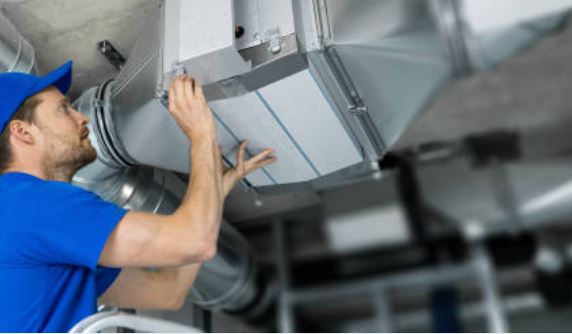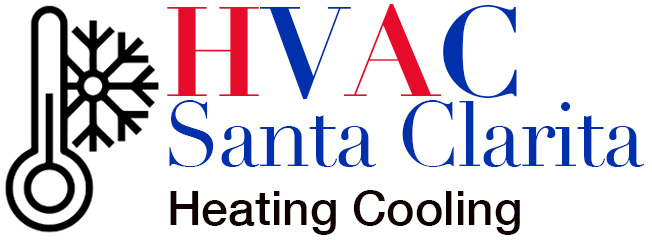Evaporator coils vs condenser coils comparison…which is which?
An average homeowner doesn’t care to understand the parts of their AC unit. They only try to figure things out when the system develops issues, or needs repair.
You want to understand these parts and how they function well.

call 661-888-0248
Contact us 24/7 for HVAC services!
An air conditioning unit usually has two coils, the condenser and the evaporator coils.
But which is which?
What are the differences between the evaporator coil and the condenser coil?
How do they differ in their functions?
And despite the differences, how do they come together to achieve the cooling function?
We look at the two coils in detail below. Let us get straight into business.
The Evaporator Coil: The Cold Side

Evaporator coils are located indoors, usually inside or near the air handler.
It is usually a set of pipes bent into a continuous U_shape. Behind it, you will spot many thin metal strips called fins(1).
Also, behind the evaporator coil is an expansion valve. This valve receives liquid refrigerant at high pressure from the outdoor condenser. It then relieves this pressure and cools the hot refrigerant liquid.
The cool liquid will then flow into the evaporator coil.
Then, as the air handler’s fan blows air across the coils, the cold refrigerant traps heat from the hot air. It also makes moisture laced in the air condense into water. The water will then drip down into the condensate drain and move outdoors.
The now cool and dehumidified air will flow into your duct network and through the rooms.
The Condenser Coil: The Hot Side

The condenser coils are stationed in the outdoor unit of your air conditioning system.
The hot gaseous refrigerant flows from the indoor evaporator to the compressor(also in the outdoor unit), which pressurizes the gas and sends it to the condenser coils.
As the hot refrigerant gas flows through the tubes of the condenser coils, the outdoor unit fan blows air across the coil. This cools the hot gaseous refrigerant and condenses it back to liquid.
The high-pressure liquid refrigerant flows back into the indoor evaporator coils through the copper pipes. Then another cooling cycle starts. The process continues to ensure your house remains cool.
The Cycle of Refrigeration: Role of the Evaporator Coil
The evaporator coil is made of copper that converts liquid refrigerant into gas. The refrigerant circulates and goes through the expansion valve before moving to the evaporator coil.
The expansion valve lowers the pressure of the refrigerant liquid. As a result, the liquid refrigerant converts to a gaseous form.
The heat transfer occurs in the coils creating a cool surface. The system’s blower moves air across the frigid surface and throughout the house.
The hot refrigerant vapor then moves outside, and the condenser coil takes over.
The Cycle of Refrigeration: The Role of the Condenser Coil
The condenser coil is also made up of copper. It holds the refrigerant in its liquid form.
The compressor increases the pressure of the gaseous refrigerant, making it condense back to liquid form. In this state, the refrigerant releases the heat it is holding. The warm air drawn is then dispersed outdoors.
The liquid refrigerant then moves inside, and the cooling cycle continues.
The condenser coil is also copper and holds the refrigerant in its liquid form. The compressor raises pressure on the gaseous freon. This makes the gas condense into a liquid state. As the gas refrigerant converts into its liquid state, the refrigerant releases the heat that it holds. The heat is then dispersed outdoors. The liquid refrigerant then cycles back inside and for the cycle to begin again.
Evaporator Coil vs Condenser Coils: Maintaining Cooling Coil Function

The condenser and evaporator coils need professional maintenance to keep them in good working condition.
Without proper and regular care, dirt will accumulate on the coils. Dirt build-up insulates the coil, inhibiting its ability to transfer heat well. Sooner or later, this problem will result in a broken air conditioner that will need costly repairs.
Regular AC maintenance and tune-ups can save you all these issues.
Watch out for these issues:
- A dirty indoor evaporator coil can make refrigerant freeze. Ice may form on coils, causing water damage to the cooling system.
- A dirty outdoor condenser coil may inhibit airflow. This forces the condenser to run longer cycles. Longer cycles mean your system is overworking, leading to a steady yet quick decline in your system.
- Damaged evaporator and condenser coils can result in costly air conditioning repairs. Keep your coils clean and in good condition to safeguard your wallet.
Problems Evaporator Coils Can Face

Other than dirt accumulation, your evaporator coil may develop some issues. Watch out for the following issues your evaporator coil may face:
- Corrosion– Copper and aluminum make the parts of an evaporator coil. Over time, due to age and exposure to air and harsh chemicals, these parts will start corroding. Over time, corrosion will cause microscopic holes and fissures and refrigerant leaks(2).
- Occasional blockages – Accumulation of dust and debris may cause blockages inside your air conditioning system. If dirt and debris settle on the evaporator coil, it blocks the airflow and alters the functioning of the entire system.
- Mold and mildew – Inside, the plenum is usually pretty damp and dark. And, it can get dirty, accelerating the thriving conditions of mold and mildew growth. Mold growth in your indoor air handler can cause serious health issues. You, therefore, do not want to just focus on getting cooled air. Watch out for such and clean and air your system to prevent mold growth.
Problems Condenser Coils Could Face

- Outdoor dirt and debris – Vegetation and assorted debris often collect at the bottom of the condenser coil passages. These cut off airflow and overwork the fan. Ensure the area around the condenser coil is free from tall grass, vegetation, debris, and anything resulting in blockages.
- Occasional blockages – Like the evaporator coil, the condenser coil may get blocked by dust, debris, or pollen build-up.
Regular air conditioner servicing will help you stay away from such issues.
Heat pumps have condenser and evaporator coils too. Read our heat pump vs air conditioner comparison to find out how they work out for a heat pump.
Condenser coil vs Evaporator Coil Frequently Asked Questions

We answer some FAQs below to help you understand these two system components. Hopefully, this helps you better understand how refrigerant continuously circulates through the condenser and evaporator coils.
What are the Differences between evaporator and condenser coils?
Here is direct head-on between the two coils of the HVAC system:
- An evaporator coil is indoor, while a condenser coil is outdoor
- The evaporator coil absorbs heat energy from the indoor air while the condenser coil releases heat into the outdoor air
- The indoor evaporator coil holds the refrigerant gaseous form, while the condenser coil holds in liquid form
Where are evaporator and condenser coils located?
The evaporator coil is located indoors, near or in the air handler. The condenser coil is located in the outside unit.
Which is bigger, the condenser or evaporator?
The condenser has to be bigger than the evaporator’s heat exchange capacity. This is because they eliminate the heat absorbed by the evaporator. They also need to eliminate the excess heat accumulated by the refrigerant in the compressor.
Final Thoughts on AC Evaporator Coils vs Condenser Coils

We are convinced that you understand the differences between evaporator and condenser coils at this stage.
And, you understand how they work together in refrigerant cycles to cool your house. Furthermore, we are convinced that you know how and the importance of regular maintenance of the evaporator and condenser coils.
Lack of proper care on the HVAC system’s components will sooner or later result in costly repairs. You may even need new air conditioner installation.

call 661-888-0248
Contact us 24/7 for HVAC services!
Sources
https://www.thespruce.com/how-to-clean-air-conditioner-coils-5225557
https://www.wikihow.com/Clean-an-Evaporator-Coil
